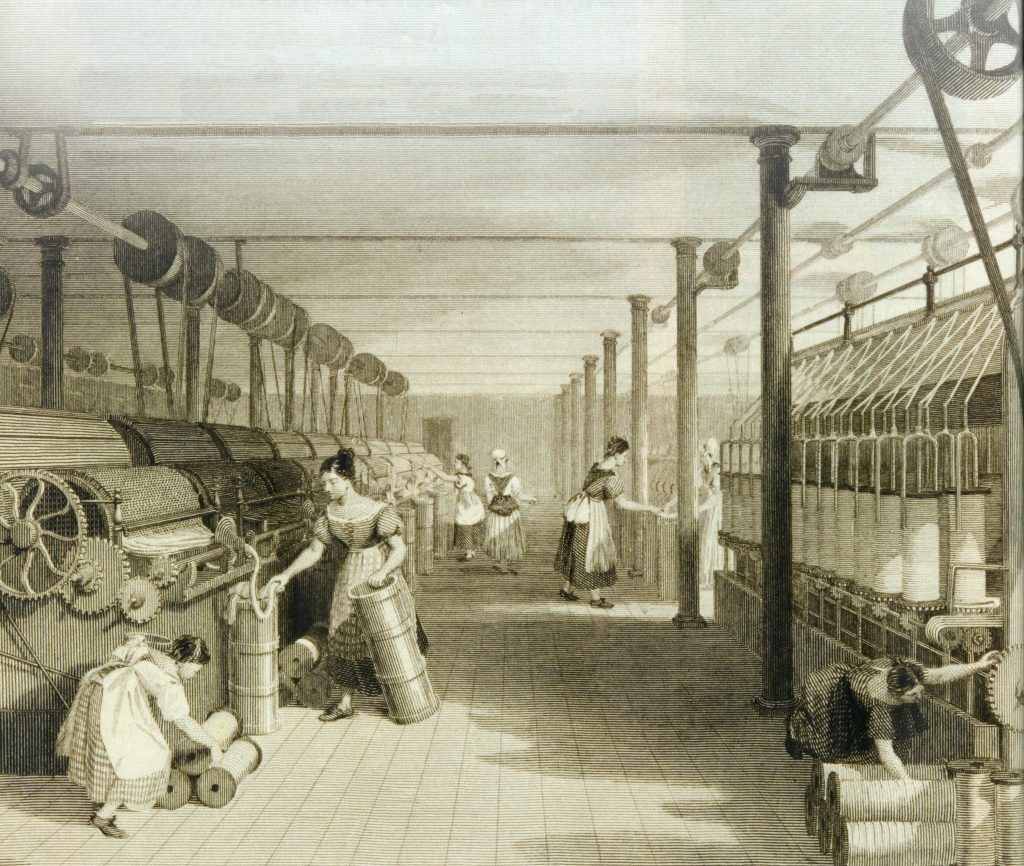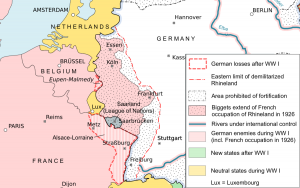Children today spend five days a week going to school for eight hours. During the first half of the nineteenth century in Britain, this was not the case. Instead, children even as young as five or six would toil all day long in factories or in mines. They had no breaks, no time off, and no schooling. Their work often led to horrible accidents, children being injured for life, and children left without an education.
Children laboring, of course, did not start with the British Industrial Revolution. It had been a normal part of life in Europe since the middle ages, when children helped their parents on farms and with household work. The people’s perception of this work, however, changed during the Industrial Revolution, since that is when people began to see this new kind of labor, factory labor, as an injustice and even criminal.1
The Industrial Revolution began in Britain during the 1780’s and rapidly changed the work process and the social relations of work. Prior to the Industrial Revolution, most people worked directly in the production of food, usually as farmers on their own farms. When textile factories began forming in the new factory cities, instead of working on their farms and making what their family needed, people left their farms and moved into the factory cities to make a living. Factory conditions of work, however, were far different from the work rhythms of farm life. In fact, they were brutal in comparison. Factory workers would typically put in between 12 and 16 hour days, working for meager wages. The machines they attended were dangerous, and the workers were often on their feet throughout the day, with perhaps a half-hour break for meals. Among these workers were children, many of whom were as young as five or six years old. Children were valued as workers for their small stature and ability to climb into small places and do things that adults often could not do. This often resulted in mutilation and the loss of appendages for many of these children.2
Children were also valued as workers by the factory owners because of the low wages that they were paid. Men were paid the most in factories, followed by women and then children. These wages, however small, were needed by the families of these children simply to survive. The parents often sent their children out to work to help pay for rent, food, and otherwise help make ends meet.3
One reason that the British public became outraged by child labor practices was the fact that children in factories were not receiving an education. Horace Mann, an American educational reformer, stated:
No greater calamity can befall us as a nation than that our children should grow up without knowledge and cultivation. If we do not prepare them to become good citizens, develop their capacities, enrich their minds with knowledge, imbue their hearts with a love of truth and all things holy, then our republic must go down to destruction as others have gone before it.4
This represents the thoughts of the British at the time, which was being echoed in the United States during its own industrial revolution. People wanted to ensure the future of their nation, which starts with the young. They believed that children should attend school for at least a while.5 This led to several laws being passed to raise the legal age of work.
In 1833, the British Parliament passed the Regulation of Child Labor law to help improve the working conditions for children in factories. The Law limited the age of workers, saying that they had to be older than nine with an age certificate to prove it, and that children 9-13 could not work for more than nine hours a day. Additionally, children 13-18 were not permitted to work longer than twelve hours a day. Along with these work-hour restrictions, the law also made school attendance a two-hour requirement, and said that children could not work at night. Fines for breaking these rules were small, however, so they were frequently violated, often with impunity.6

Many other pieces of legislation were also passed to place limits on the gender, hours, and ages of workers. The Mining Act of 1842 prevented women and girls from working in mines, and the Ten Hours Bill of 1847 set ten as the maximum number of daily working hours for women and children. This act was hated by factory owners because they believed it would hurt the textile industry’s competitiveness worldwide. After these bills, others followed to ensure their effectiveness, and to ensure that they would be properly implemented.7
By 1900, the minimum working age had been raised to twelve years of age and child labor had decreased drastically in Great Britain. However, the introduction of legislation against child labor provoked its share of protests as well. Because of these protests, Parliament established commissions to collect evidence of abusive practices. These were called the Blue Books or Sadler Reports. They interviewed children, parents, factory workers, owners, and even doctors on the condition of children in textile factories. Unsurprisingly, the reports uncovered a range of serious abuses by factory owners and overseers. Unfortunately, most critics just said that the claims were exaggerated in order to continue their money making practices.8
The legislation surrounding the British Industrial Revolution had become very effective by 1900, and child labor and its accompanying abuses had decreased dramatically. By 1900, most children were attending school instead of working in factories. The laws passed finally added up to changing British child labor to being closer to what we see today, a mostly child-free labor system, with children going to school and adults having regulated working hours.
- World History Encyclopedia, 2011, s.v. “Child Labor and Child Labor Laws in Early Industrial Great Britain.” ↵
- James D. Schmidt, “Broken Promises: Child Labor and Industrial Violence,” Insights on Law & Society, no. 3 (Spring 2010): 14–17. ↵
- Robert Whaples, “Hard at Work in Factories and Mines: The Economics of Child Labor during the British Industrial Revolution,” Business History Review, no. 2 (2001): 429. ↵
- Friends’ Intelligencer vol. 28 no. 1 (1871): 336. ↵
- James D. Schmidt, “Broken Promises: Child Labor and Industrial Violence,” Insights on Law & Society, no. 3 (Spring 2010), 14–17. ↵
- Great Britain, “Factories Regulation Act” (1833). ↵
- Steven Toms and Alice Shepherd, “Creative Accounting in the British Industrial Revolution: Cotton Manufacturers and the ‘Ten Hours’ Movement,” MPRA Paper, No. 51478 (2013), 6-8. ↵
- World History Encyclopedia, 2011, s.v. “Child Labor and Child Labor Laws in Early Industrial Great Britain.” ↵



141 comments
Megan Barnett
This article was well written however I felt as though I was reading a textbook, so my advice would be to draw the audience’s attention more. Referring to the American industrial revolution was a good way to connect knowledge that the reader most likely already has. Also showing how child labor laws progressed and changed overtime was a good way of organizing the information.
Briana Myers
It is hard to believe that at one point in history children as young as 5 years old worked in factories. This was very dangerous for them to be doing yet the factory owners did not care as long as they kept making their money. It is sad that because of child labor many of these kids did not receive an education or they would get injured from the work they would be doing. Their education would be sacrificed in order for them to help out their families survive. It is good that laws were made in order to stop child labor.
Edith De Loera
Though I had previous knowledge of child labor back in the 1700’s and even later, this article made me realize and imagine in vivid detail how these children were actually taken advantage of. Children were used for economic competition and were exposed to such unsafe and hazardous conditions. I am grateful this article came to being because the topic is not frequently talked about, while it certainly changed the ways the government functioned.
Manuel Aguilera
I feel that the children who were working during these grueling times were actually fully aware of the dangers that surrounded them, much of the society at that time must have been undergoing such harsh stress because of the industrial era. It is disappointing that the government at the time had only put such weak laws into place as it is more than likely that they too had children who did not have to go through such a stressful life.
Karina Nanez
It is really awful to look back oh the dark parts of history and realize how much we take for granted. I cannot even begin to fathom what life would have been like under these circumstances but your in depth explanation of why these toddlers and teenagers had to work in terrible conditions to support their family is as close as I ever want to get. It makes me sick to think that these children were mutilated and maimed for life because heir families were so poverty stricken.
Nahim Rancharan
I was initially drawn to the title of your article, and the content of the article was no let down;that;s for sure. I loved how this article was able to effectively capture the grueling realty of the British Industrial Revolution. While many may only see the positive effects of such a significant period of advancement in world history, it is important not to ignore the harsh realities that resulted from such a historic period. Child Labor is not a relatively new idea, this is something that has been occurring for centuries and the British Industrial Revolution was but one of many instances of things like child labor occurring. I also liked how you included America’s role, more specifically Horace Mann’s role, in bringing to light this unfortunate reality to nations across the globe. It was proven successful given the push that it gave Parliament of implementing the Regulations of Child Labor. While the issue has yet not been entirely solves, this event has managed to bring awareness about the harsh realities of Child labor as well as the need to address and remedy this issue. Great job on highlighting this point in your article!
Teresa Valdez
I found it interesting that while speaking about British labor laws and outrage from a lack of education, the article used a quote from an American reformer. However, it fit the article well. It is hard to imagine having to give up education, one of the most powerful tools anyone could have, in order to work for your family’s survival. These unimaginable circumstances are articulated very well in this well-organized article. From the introduction, parallels are drawn between how children spent their time then as compared to now that make the article shocking.
Priscilla Reyes
Awesome quote at the beginning of the article, Bailey! I think what I have the most trouble with in this topic is that children were stripped of their youth. Today, something similar is going on with children in other countries who also have no choice but to work. The conditions of these factories were horrible and caused negative effects. Therefore, I think your article shared a very important part of history.
Anayeli Prieto
I find it that robbing children from their childhood is very unfortunate. The excuse of poverty shouldn’t justify that a child should work long hours and even risk their lives. They should be playing with toyas and enjoying their childhood by making memories that they want to cherish forever. I just simply do not understand why the parents would decide to enforce the children work under these harsh conditions and even risk their own lives.
Mario De Leon
Great article. It’s hard to believe children working long extensive hours especially when I don’t have a lot of work experience and I am 19. It is sad that these children’s education was robbed and they were forced to work. In my mind education is the most important thing for a child and I’m glad people grew outraged by these child labor laws.